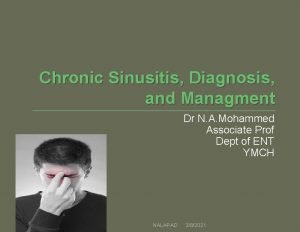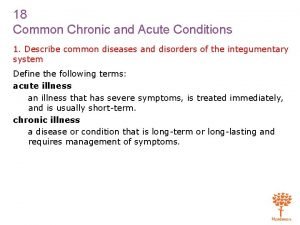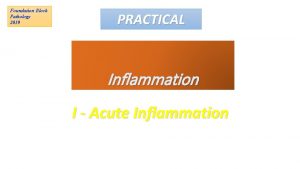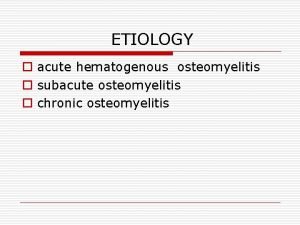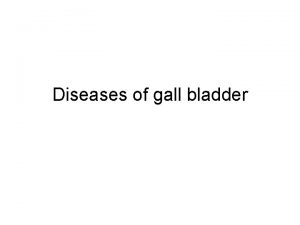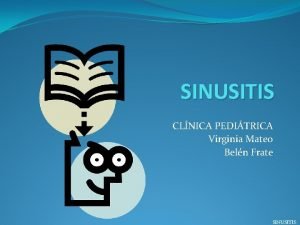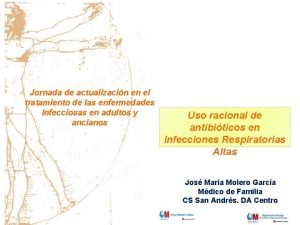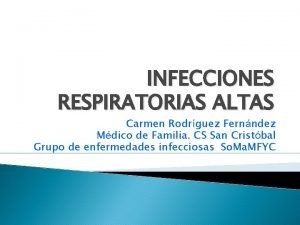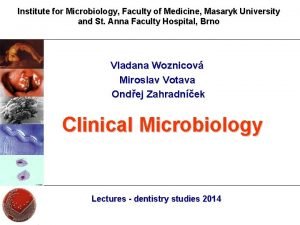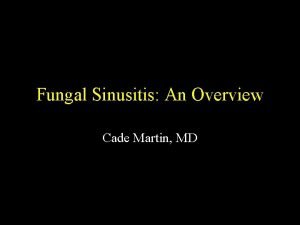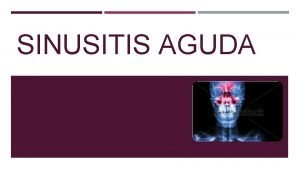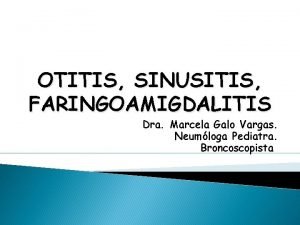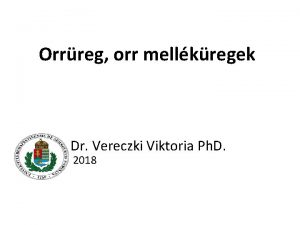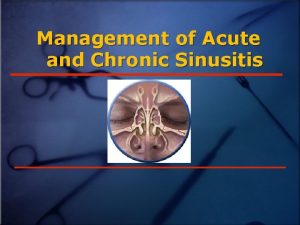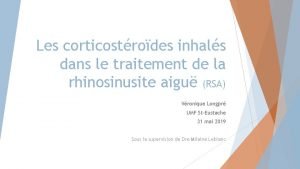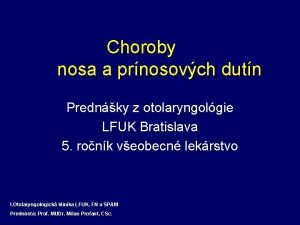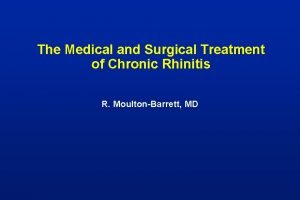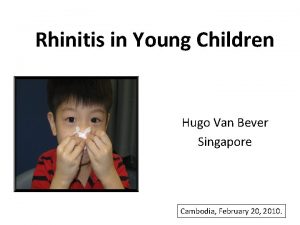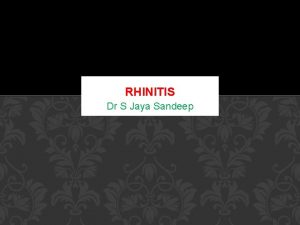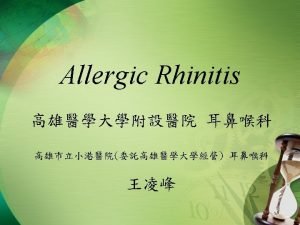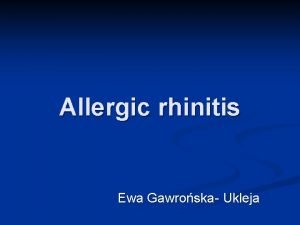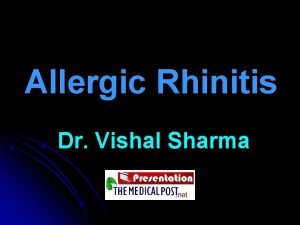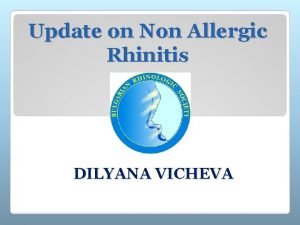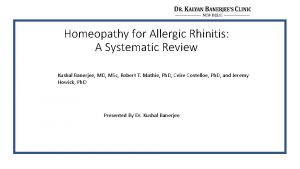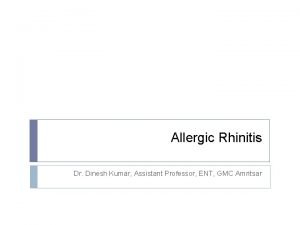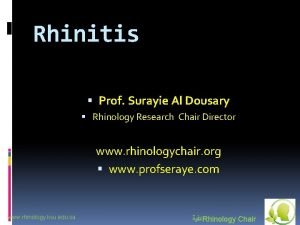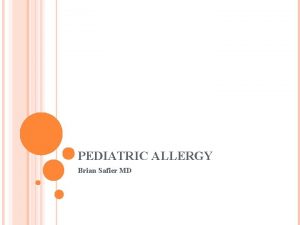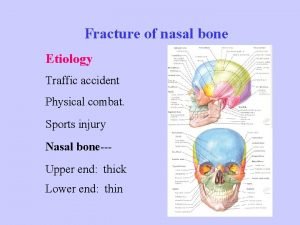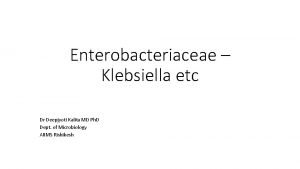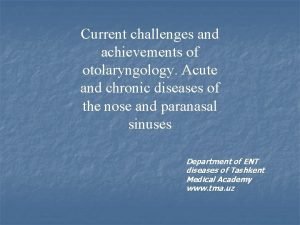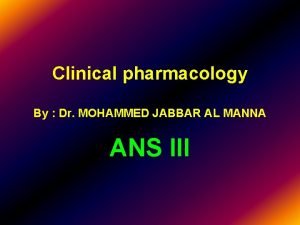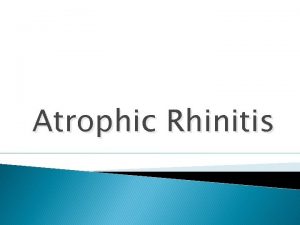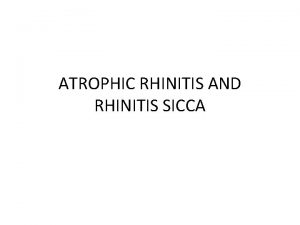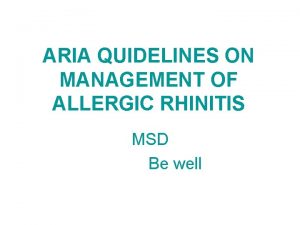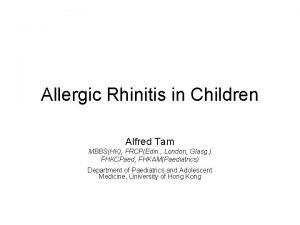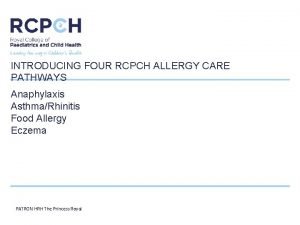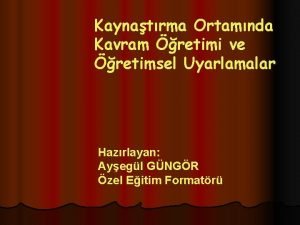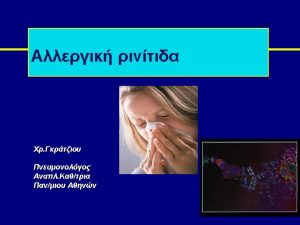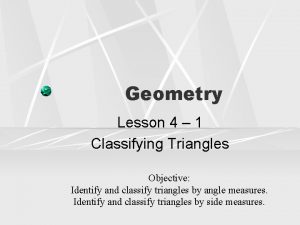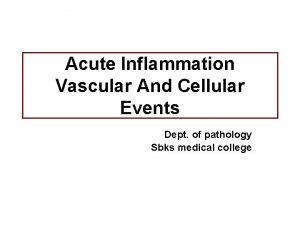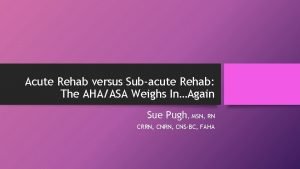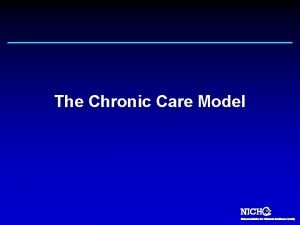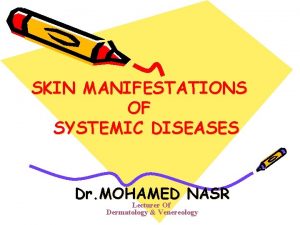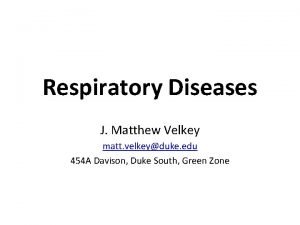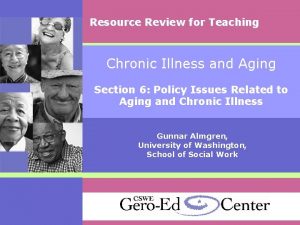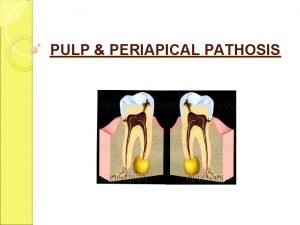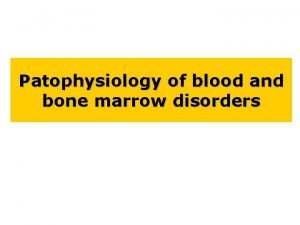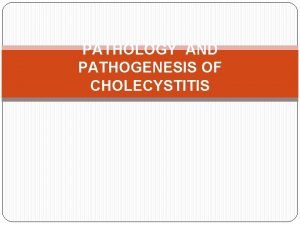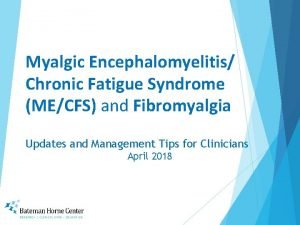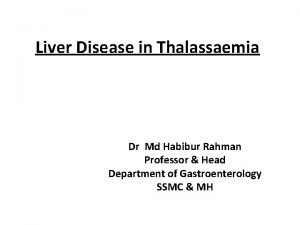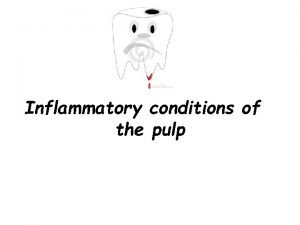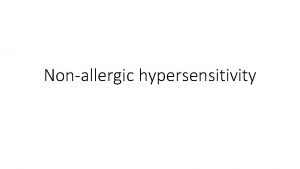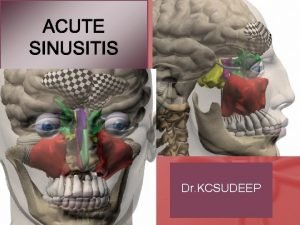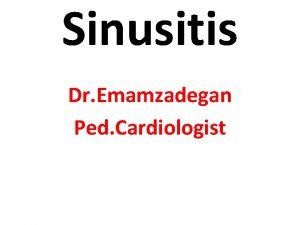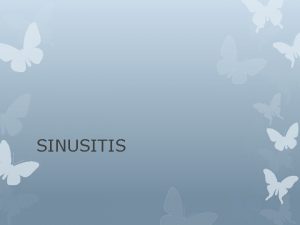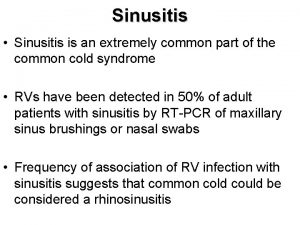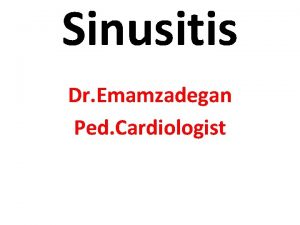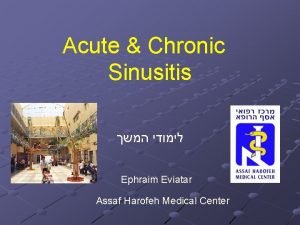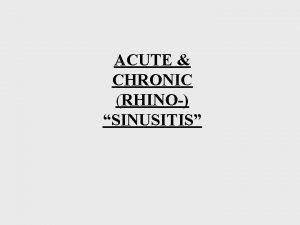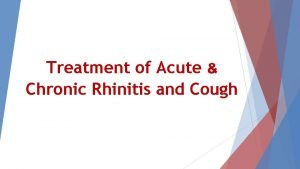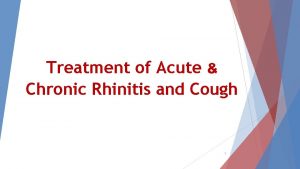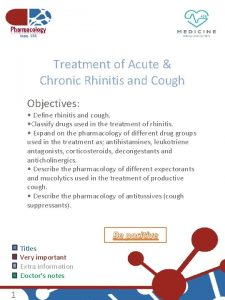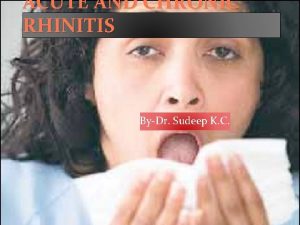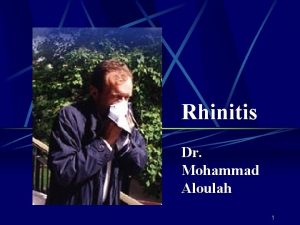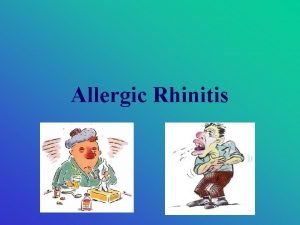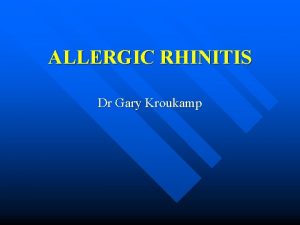Nonallergic Rhinitis Ch 46 Acute and Chronic Sinusitis
































































- Slides: 64

Nonallergic Rhinitis (Ch. 46) Acute and Chronic Sinusitis (Ch. 47) • Marilene B. Wang, MD, FACS • Professor • UCLA Department of Head Neck Surgery • Chief of Otolaryngology • VA Greater Los Angeles Healthcare System

1. Nonallergic rhinitis a. b. c. d. e. Is more common in males Incidence increases with age May occur in conjunction with allergic rhinitis B and c All of the above

2. Innervation of the nasal mucosa a. Parasympathetic nerves are the primary component of the efferent nasal reflex arc. b. Parasympathetic nerves release vasoactive intestinal peptide c. Parasympathetic nerves cause nasal decongestion d. C fibers are efferent nerves that react to pain, changes in temperature, osmolarity and irritants. e. All of the above

3. Nasal provocation testing a. Can differentiate between allergic and nonallergic rhinitis b. Done with histamine is specifically for allergic rhinitis c. Done with capsaicin is specifically for nonallergic rhinitis d. Done with histamine causes decreased vascular permeability, sneezing, and nasal obstruction e. Done with methacholine leads to increased rhinorhea

4. Nonallergic rhinitis with eosinophilia a. Occurs in response to common allergens such as dust, pollen, mold b. Symptoms are exacerbated by weather changes c. Occurs in over half of patients with nonallergic rhinitis d. Involves mast cells and Ig-A positive cells in the nasal mucosa e. Does not occur with nasal polyps

5. Rhinitis of pregnancy a. Occurs more frequently in pregnant women who smoke b. Affects the majority of pregnant women c. Occurs in response to estrogen-induced vascular smooth muscle relaxation d. Severity of symptoms parallels blood progesterone levels e. All of the above

6. Medication-induced rhinitis can be found from use of the following medications: a. b. c. d. e. Aspirin Oral contraceptives Amitryptiline Hydralazine All of the above

7. Atrophic rhinitis a. Is most commonly associated with infection from Klebsiella pneumoniae b. Can occur after aggressive nasal surgery c. Is most common in young adults d. Results in changes in nasal mucosa from squamous epithelium to ciliated respiratory epithelium e. Can be treated effectively with antibiotics

8. Idiopathic rhinitis a. b. c. d. e. Is also known as vasomotor rhinitis Occurs rarely Involves autonomic nervous system dysfunction A and c All of the above

9. Diagnosing nonallergic rhinitis a. b. c. d. e. Requires a thorough history Requires acoustic rhinomatry Requires a sinus CT scan All of the above None of the above

10. Treatment of nonallergic rhinitis a. May include nasal steroids, antihistamines, and anticholinergics b. Septoplasty and/or turbinate reduction may be of benefit c. Vidian neurectomy can provide relief of rhinorrhea d. A and c e. All of the above

Acute and Chronic Sinusitis 12

Major Healthcare Problem • One of most common healthcare problems in U. S. • Over 31 million Americans affected annually • 18 -22 million physician office visits annually

Definition of rhinosinusitis • Group of disorders characterized by inflammation of the mucosa of the nose and paranasal sinuses • Acute, subacute, chronic


Paranasal Sinus Function • Lining – pseudostratified ciliated columnar epithelium • Mucous and serosanguinous glands • Parasympathetic and sympathetic innervation

Paranasal Sinus Function • Mucous blanket renewed every 1015 minutes • Warm and humidify air • Secrete immunoglobulins, interferons, inflammatory cells

Paranasal Sinus Function • Cilia beat 10 -15 times/second • Cilia function varies with environment, allergies, etc. • Mucociliary system—cleanse sinus, immunoprotective • Move mucous to natural ostia of sinuses


Rhinosinusitis-Major factors • Facial pain/pressure • Nasal obstruction/blockage • Nasal discharge/purulence/discolored postnasal drip

Rhinosinusitis-Major factors • Hyposmia/anosmia • Purulence in nasal cavity on examination • Fever (acute rhinosinusitis only)

Rhinosinusitis-Minor factors • Headache • Fever • Halitosis • Fatigue

Rhinosinusitis-Minor factors • Dental pain • Cough • Ear pain/pressure/fullness

Categories of Rhinosinusitis • Acute • Subacute • Chronic • Recurrent, acute • Acute exacerbations of chronic

Acute Rhinosinusitis • Duration up to 4 weeks • > 2 major factors • 1 major factor + 2 minor factors • Nasal purulence on exam

Subacute Rhinosinusitis • Duration 4 -12 weeks • >2 major factors • 1 major factor + 2 minor factors, or nasal purulence on exam • Complete resolution after effective medical therapy

Chronic Rhinosinusitis • Duration > 12 weeks • History same as for subacute • Facial pain does not constitute suggestive history in absence of other nasal symptoms or signs

Recurrent acute • >4 episodes/year + each episode last >7 -10 days. • Absence of intervening signs of chronic rhinosinusitis

Acute exacerbations of chronic • Sudden worsening of chronic rhinosinusitis • Return to baseline after treatment

Factors Associated with Chronic Rhinosinusitis • Allergies • Immunodeficiency • Genetic/congenital

Factors Associated with Chronic Rhinosinusitis • Endocrine • Neural

Factors Associated with Chronic Rhinosinusitis • Anatomic • Neoplastic • Acquired mucociliary dysfunction

Associated Factors • Microorganisms—viral, bacterial, fungal • Noxious chemicals, pollutants, smoke • Medications • Trauma • Surgery

Microbiology of acute sinusitis (adults) • S. pneum (20 -43%) • H. influenzae (22 -35%) • Strep spp. (3 -9%) • Anaerobes (0 -9%) • M. catarrhalis (2 -10%) • S. aureus (0 -8%) • Other (4%)

Microbiology of acute sinusitis (children) • S. pneum (25 -30%) • H. influenzae (15 -20%) • M. catarrhalis (15 -20%) • S. pyogenes (2 -5%) • Anaerobes (2 -5%) • Sterile (20 -35%)

Recommended abx for adults with acute bacterial rhinosinusitis • Mild disease with no recent antimicrobial use • Augmentin, Amoxicillin • Vantin • Ceclor • Omnicef

Switch if no improvement after 72 hours • Tequin, Levaquin, Avelox • Augmentin • Combination (Amox or clinda + Suprax)

Abx for acute sinusitis if PCNallergic • Bactrim • Doxycycline • Zithromax, Biaxin, Erythromycin • Switch to quinolone if no improvement in 72 hours

If recent abx use • Quinolone • Augmentin • Clindamcin + rifampin • Consider IV abx

Abx for acute sinusitis in children • Augmentin, Amoxicillin • Vantin • Ceclor • Omnicef • Switch if no improvement after 72 hours

If PCN-allergic • Bactrim • Macrolide

If recent abx use (children) • Augmentin • Rocephin • Bactrim, macrolide • Consider IV abx if no improvement

Other symptomatic therapies • Afrin for 3 days • Normal saline sprays • Decongestants • Antihistamines • ? Steroids

Complications of sinusitis • Periorbital cellulitis • Preseptal cellulitis/abscess • Orbital cellulitis • Orbital abscess • Cavernous sinus thrombosis

Chronic rhinosinusitis • Antibiotics • Antihistamines • Nasal steroids • Normal saline irrigations • Allergy evaluation +/immunotherapy

Chronic rhinosinusitis • Sinus CT scan • Consider anatomic factors— septal deviation, nasal polyps, concha bullosa, ostio-meatal blockage

Indications for sinus surgery • Nasal polyposis • Anatomic blockage—deviated septum, enlarged turbinate, concha bullosa • Mucocele • Orbital abscess

Indications for sinus surgery • Fungal sinusitis—allergic vs. invasive (mucor) • Tumor of nasal cavity or sinus

Indications for sinus surgery • Chronic, recurrent sinusitis • Failure to respond to maximal medical therapy • Obtain cultures













Long-term management • May be a lifelong disease • Allergy control— antiihistamines, nasal steroids, immunotherapy • Oral steroids—judiciously • Antibiotics for acute exacerbations

Long-term management • Environmental control—avoid carpet, damp, mold, older homes, smog • Saline irrigations

Long-term management • Alternative therapies— acupuncture, stress management, herbal remedies • Pain management • Multi-disciplinary effort—work with allergy, infectious disease, neurology/pain management services
 Chronic sinusitis
Chronic sinusitis Acute and chronic inflammation difference
Acute and chronic inflammation difference Common chronic and acute conditions chapter 18
Common chronic and acute conditions chapter 18 Purulent inflammation
Purulent inflammation Leukemia survival rate
Leukemia survival rate Classification of periradicular lesions
Classification of periradicular lesions Acute cholecystitis vs chronic cholecystitis
Acute cholecystitis vs chronic cholecystitis Acute subacute chronic
Acute subacute chronic Gallbladder adenocarcinoma
Gallbladder adenocarcinoma Acute vs chronic heart failure
Acute vs chronic heart failure Virginia mateo
Virginia mateo Fenoximetilpenicilin
Fenoximetilpenicilin Criterios de centor
Criterios de centor Pan sinusitis
Pan sinusitis Wikipedia
Wikipedia Allergic fungal sinusitis treatment
Allergic fungal sinusitis treatment Clasificacion de sinusitis
Clasificacion de sinusitis Cultivo faringeo
Cultivo faringeo Infundibulum septum
Infundibulum septum Sinusitis
Sinusitis Allergic fungal sinusitis treatment
Allergic fungal sinusitis treatment Rhinosinusite iness
Rhinosinusite iness Sinusitis maxillaris chronica
Sinusitis maxillaris chronica Pregnancy rhinitis treatment
Pregnancy rhinitis treatment Rhinitis medicamentosa
Rhinitis medicamentosa Hugo van bever
Hugo van bever Eiterborken
Eiterborken Aria classification of allergic rhinitis
Aria classification of allergic rhinitis Clarytyna
Clarytyna Allergy shiners
Allergy shiners Non allergic rhinitis treatment
Non allergic rhinitis treatment Allergies icd 10
Allergies icd 10 Dr. kushal banerjee
Dr. kushal banerjee Management of allergic rhinitis
Management of allergic rhinitis Primary atrophic rhinitis
Primary atrophic rhinitis Allergic crease adalah
Allergic crease adalah Atrophic rhinitis
Atrophic rhinitis Dr deepjyoti kalita
Dr deepjyoti kalita Atrophic rhinitis
Atrophic rhinitis Alpha blockers classification
Alpha blockers classification Primary atrophic rhinitis
Primary atrophic rhinitis Young's operation
Young's operation Management of allergic rhinitis
Management of allergic rhinitis Rhinitis allergy
Rhinitis allergy Honeymoon rhinitis treatment
Honeymoon rhinitis treatment Rhinitis allergy
Rhinitis allergy Kavram öğretiminde kullanılan yöntemler
Kavram öğretiminde kullanılan yöntemler Rhinitis in children
Rhinitis in children Young's operation
Young's operation Classify the following triangle as acute obtuse or right
Classify the following triangle as acute obtuse or right Vascular and cellular events of acute inflammation
Vascular and cellular events of acute inflammation Difference between acute and subacute rehab
Difference between acute and subacute rehab Acute blood loss anemia
Acute blood loss anemia Definition of chronic toxicity
Definition of chronic toxicity Flinders model of chronic care self-management limitations
Flinders model of chronic care self-management limitations Developed by ed
Developed by ed Earthy look in chronic renal failure
Earthy look in chronic renal failure Chronic granulomatous disease
Chronic granulomatous disease Chronic care model definition
Chronic care model definition Kronfeld mountain pass theory
Kronfeld mountain pass theory Normocytic normochromic symptoms
Normocytic normochromic symptoms Acute calculous cholecystitis
Acute calculous cholecystitis Fibromyalgia vs chronic fatigue
Fibromyalgia vs chronic fatigue Stigmata of chronic liver disease
Stigmata of chronic liver disease Vertical and horizontal percussion of tooth
Vertical and horizontal percussion of tooth
